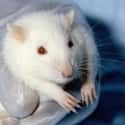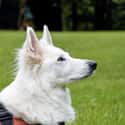(#8) Researchers Played Jazz Music For Coke-Injected Rats
In this 2011 study, entitled "Music-induced context preference following coke conditioning in rats," rats were placed in a room and played a loop of a Miles Davis song. They were then played a loop of Beethoven. The rats seemed to prefer silence over either track, but of the two, the majority preferred Beethoven – at least, prior to the introduction of coke.
The rats were regularly injected with liquid coke for one week, and, surprisingly, most of their tastes changed from classical music to jazz. The ostensible aim of the study was to determine the neurological triggers of substance use, although the study mostly made news because of the inscrutable and somewhat quirky nature of its methods.
(#1) Injected Spiders Wove Spastic Webs
In 1995, a group of NASA scientists studied the effects of various intoxicants on the web-weaving abilities of spiders. Ostensibly, they sought to determine the relative toxicity levels of the substances by examining the webs they created after injection.
What followed was most likely confirmation of anticipated results: the spider on weed wove a decent web, albeit incomplete; the spider on a stimulant wove quickly and poorly; the spider on a hallucinogenic wove a scattered, inefficient web; and the web of the spider on caffeine was off-center and asymmetrical.
(#6) A Chimpanzee Was Raised Like A Human Child
While there are many accounts of children raised by animals, in 1931, psychologist Winthrop Kellogg speculated what would happen if an animal was brought up by humans to behave as a human. Kellogg brought a baby female chimpanzee named Gua into his home and raised her as if she were human, giving her the same care as their infant son, Donald. Donald and Gua were siblings in every sense except species classification. They played together, ate together, and took the same developmental tests.
While Gua performed well on the tests, she couldn’t acquire language skills – and impaired Donald’s development in the process. The Kelloggs ended the experiment after nine months, possibly because baby Donald began imitating the Gua's chimp noises. Gua was released into an animal colony, but passed only months after she left the family's home.
(#5) Cartilage Cells Grew A Human Ear On A Mouse's Back
Nicknamed the “Vacanti mouse” for the project's lead scientist, this mouse was seeded with cow cartilage cells that had been molded into an ear shape. The result of this 1997 experiment was a disproportionate, human-ear-shaped growth on the mouse's back.
The growth was eventually removed, and the mouse went on to live a "happy, normal life." The purpose of the study, though sensationalistic at first glance, was to improve reconstructive plastic surgery techniques.
(#2) Baby Jellyfish Were Ejected Into Space
In 1991, Dr. Dorothy Spangenberg was studying the potential effects of zero-gravity on human fetuses. Since testing her research on actual fetuses would have assuredly crossed an ethical line, she and her team packed 2,478 baby jellyfish onto the Columbia space shuttle, ejected them into orbit, and watched for results. Initially, the jellyfish adapted well to the environment, and bred themselves up to a population of 60,000.
Sadly, back on Earth, the new jellyfish were found to have greater “pulsing abnormalities” than usual – a syndrome commonly known as “vertigo.” The experiment demonstrated that, hypothetically, humans born in space might experience mobility issues once they land on Earth, similar to the phenomenon of "sea legs," often experienced by seafarers immediately after returning to land.
(#7) A Headless Dog Was Kept Alive
In 1940, Soviet physician Sergei Brukhonenko developed a heart-lung machine and used it to keep a headless dog alive. Just to prove his feat, he displayed the head of one of his subjects to an audience of Soviet scientists.
Under Brukhonenko's direction, the head flinched, blinked, and even ate a piece of cheese.
New Random Displays Display All By Ranking
About This Tool
Animal experiments have been controversial for hundreds of years, but they have widely influenced the scientific exploration of physiology, genetics, and diseases in modern medicine. Although animal experiments have helped countless scientists achieve brilliant scientific achievements, they have also inspired many people to criticize unethical experiments, even the most conservative experimental estimates.
Although scientists have developed alternative animal experiments in recent history, there are still researchers who have conducted a large number of crazy experiments on unsuspecting animals, monkeys, dogs, rats, etc., are common subjects. The random tool introduced 17 crazy animal experimentations throughout history that most people don't know.
Our data comes from Ranker, If you want to participate in the ranking of items displayed on this page, please click here.
















